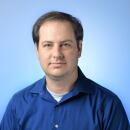No decision on sports fields for Fairview Park, amid community controversy
- Share via
It was standing-room only Wednesday night for the crowd of 125 people who came to hear the fate of Fairview Park, where athletic fields are being proposed alongside a space long popular for its ridable trains.
As it turned out, any new sports fields for the 208-acre windswept park — where trains, gliders, minuscule endangered species, wetlands and sacred Native American sites co-exist — weren’t decided.
At the outset of the meeting, the park’s citizens advisory committee postponed adding the most controversial proposals for Fairview’s roughly 45-acre southeast quadrant: baseball/softball fields, soccer/football fields and multiuse athletic fields.
Steve Smith, vice chairman of the Fairview Park Citizens Advisory Committee, proposed postponing discussion of the changes and was supported by all his colleagues. Committee member Lee Ramos, a candidate for City Council, was absent.
Adding sports fields is “a big decision,” Smith said after the vote. “Someone pointed out that it’s the elephant in the room, and I couldn’t agree more. I think we need to take a step back and do the proper amount of due diligence.”
The committee did approve a native plant nursery for the southeast quadrant, but rejected adding a community garden and re-creating a Native American village.
The nursery will receive some preliminary analysis from city staff and be reexamined by the committee at a future meeting.
The committee also heard from Mel Hitchcock of the Riverside Live Steamers, a ridable train in Riverside’s Hunter Hobby Park.
Trains and athletic fields co-exist in that park, though the fields are at least 50 feet from the trains, which creates enough of a buffer zone, said Hitchcock, a Costa Mesa resident.
He noted that the Orange County Model Engineers do not have fencing at Fairview, which for Riverside has been a essential safety component for all park users.
“The model trains do not mix well with uncontrolled traffic crossing the railroads,” Hitchcock said.
He said if athletic fields were added inside some of the open spaces within Fairview’s tracks, there wouldn’t be enough room for them to sit at a safe distance from the trains.
“I would be on the side of caution on [putting] a lot of athletic field activity there,” Hitchcock said.
*
Public comment
More than two hours — the bulk of the committee’s session — was devoted to public comments. About 25 people spoke and the committee received more than 80 letters before Wednesday’s meeting.
The prevailing sentiments were save the trains, keep the park natural and add athletic fields that are in high demand citywide.
Among the pro-trains and “keep it natural” crowd was Anthony Steinmetz, a 14-year-old Boy Scout from Anaheim. He is a member of the Orange County Model Engineers.
“One thing we learn in Boy Scouts is, ‘Leave no trace,’” Steinmetz said, dressed in his Scout uniform. “And I think this is not ‘Leave no trace.’”
Adelia Sandoval, representing the Juaneño Band of Mission Indians, Acjachemen Nation, said her group wishes the entire park to remain as it is.
“The tribe itself does not want to see any new development on this sacred site,” she said.
Fairview Park’s southwest quadrant is home to the Fairview Indian Site, an archaeological remnant of a Native American village which is listed on the National Register of Historic Places.
Archaeologists from California Cultural Resources Preservation Alliance continued their disapproval of further development of the southeast quadrant, saying it too has archaeological resources connected to the Fairview Indian Site across the park.
Those remnants are also eligible for the National Register of Historic Places, said Patricia Martz, a Cal State Los Angeles professor of archaeology and anthropology.
“This needs to be taken into consideration for any kind of development,” she said.
Several youth sports leaders said the park should be open to adding fields that could be used for soccer, rugby and the like.
John Rubright of AYSO 120 said he has long been looking for opportunities to add lighting for fields, which would make them available in the afternoons and evenings, when parents and coaches are off work.
But the effort is consistently stifled by neighbors’ “not in my backyard” mentalities, he said.
“People, we’re trying to do the best we can, but you as residents don’t want it in your backyard,” Rubright said. “If you don’t give us lit fields, [the kids] don’t have a place to go.”
